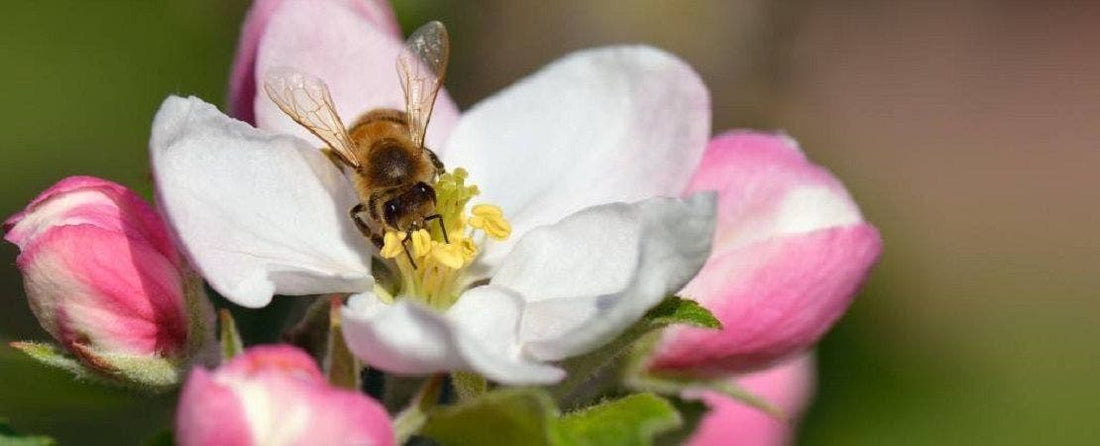
Tips for a Bee Friendly Garden
Share
A Bee-friendly Garden is All About Pollen
Have you ever wondered what makes a garden truly bee-friendly? While it may seem that any flower-filled landscape would attract pollinators, supporting bees requires more than just planting blooms. Bees are essential to ecosystems and agriculture, yet their populations continue to decline due to habitat loss, pesticide exposure, and climate change. By creating a bee-friendly garden with nectar-rich flowers, native plants, and chemical-free growing practices, you can help sustain these vital pollinators. Small changes—like planting diverse flowers that bloom from spring to fall and providing water sources—can make a big impact. Start growing and developing a welcoming habitat for pollinators today and enjoy a healthier, livelier garden.
Diversity is Everything
Fill your garden space with flowers that have staggered bloom times so that when some flowers fade for the season others is just beginning to open. This will ensure the bees have a reliable year round food source.
Have a Drink On Us
Pollinating your garden is thirsty work and those bees would greatly appreciate a place to rest and re-hydrate. “But couldn’t bees just drink from the birdbath?” Unfortunately no. Bees are not good swimmers and even a birdbath is too deep for them to safely use without falling in. Try setting out a shallow bowl of water dotted with flat stones or sticks that bees can land on and drink without fear of drowning. Place the bowls on ground level near plants plagued by parasites and the other beneficial bugs that come to drink will work as an efficient and chemical free pest control.
Watch What You Spray
Recent scientific research points to certain pesticides as one of the main reasons bee colonies collapse. Try to limit chemical pesticide use in your garden whenever possible. If you must use pesticides it is best to avoid those that contain neonicotinoids which are known to kill bees.
A Hive Away from Home
Honey bees are marvelously beneficial to gardens, but they certainly aren’t the only game in town. Other good bugs such as Mason bees are another kind of guest you’ll want to visit your yard. Bee houses are wonderful lures for Mason bees who are more docile than honey bees are even better pollinators than their famous cousins.
Bees are color lovers and are especially attracted to shades of blue, purple, white and yellow. Clump flowers together by color to make them easier for bees to locate. If you’re plagued by indecisiveness like me and are having trouble picking just the right flowers, bee boxes are the perfect fix. They contain plants that are guaranteed to attract pollinators to your garden.
It’s All About Pollen
If you’re looking to up the interest of your garden to local pollinators planting single bloom flowers is the best choice. Plants sporting double headed blooms and highly hybridized plants tend to produce less pollen than the soloists. Less pollen means less bees, so it is best to brush up on which flowers to keep and which to avoid.
*Pro tip: Native plants attract native bees, but exotic plants attract honeybees.